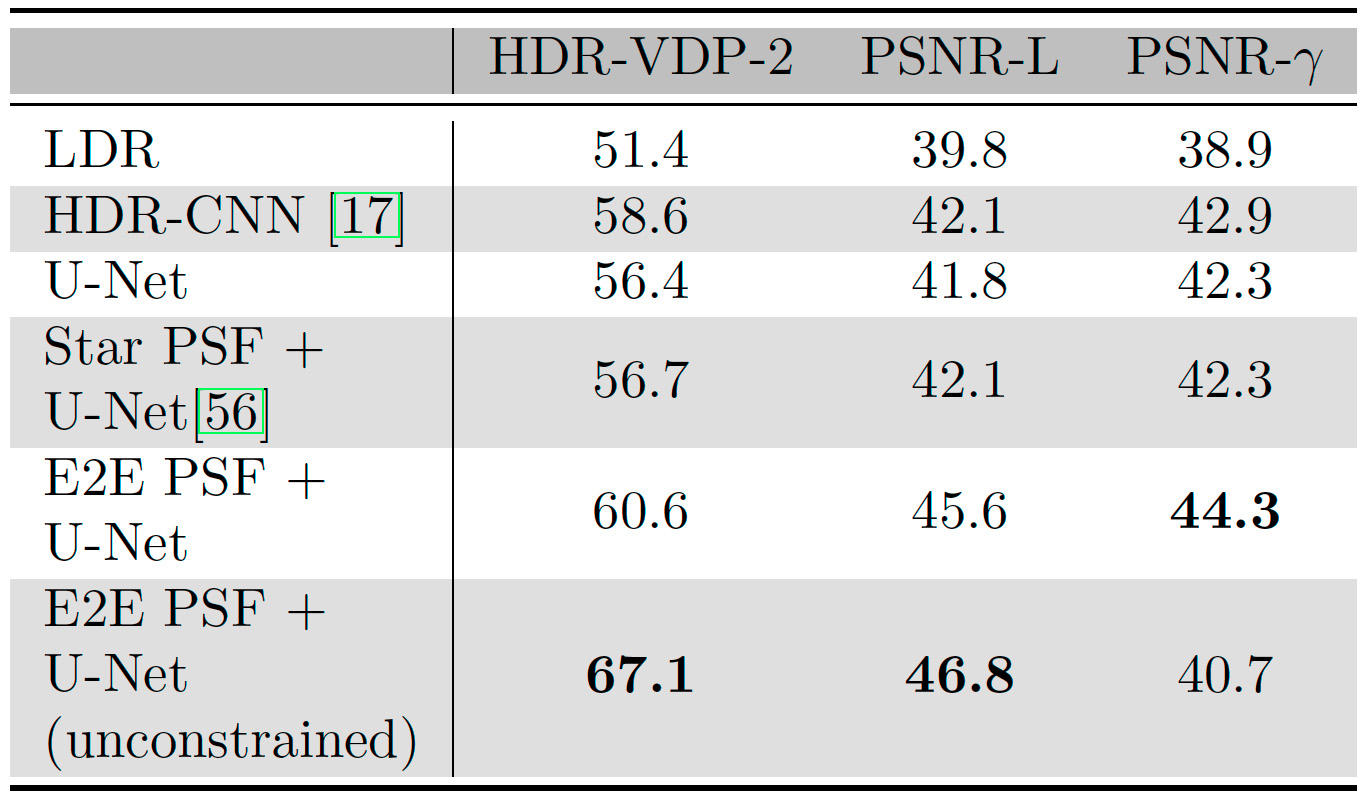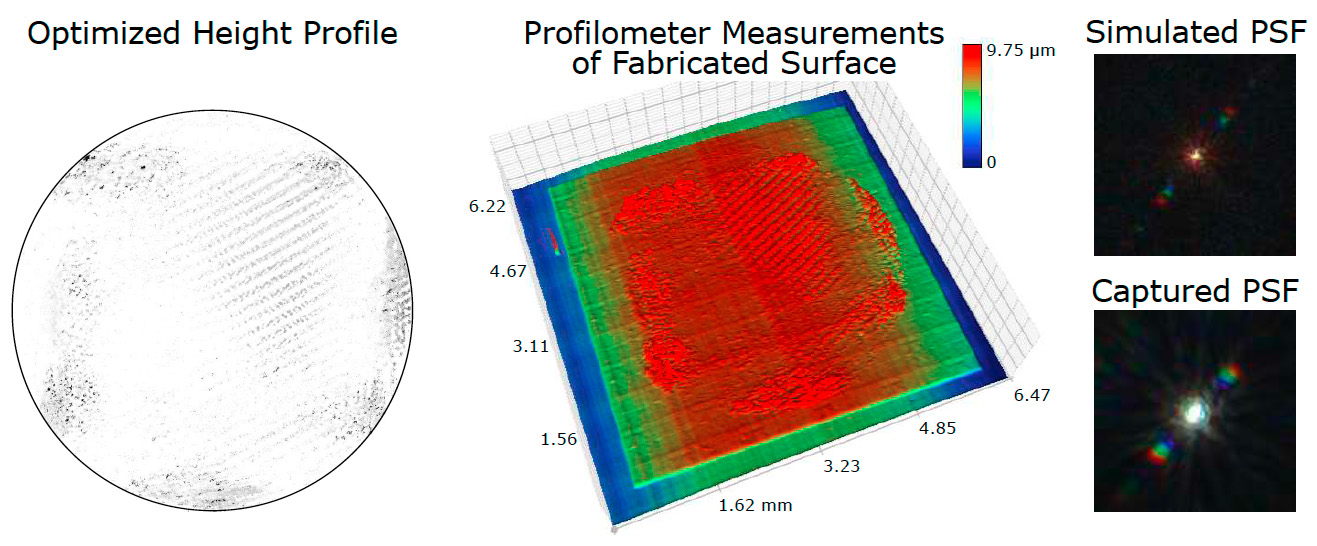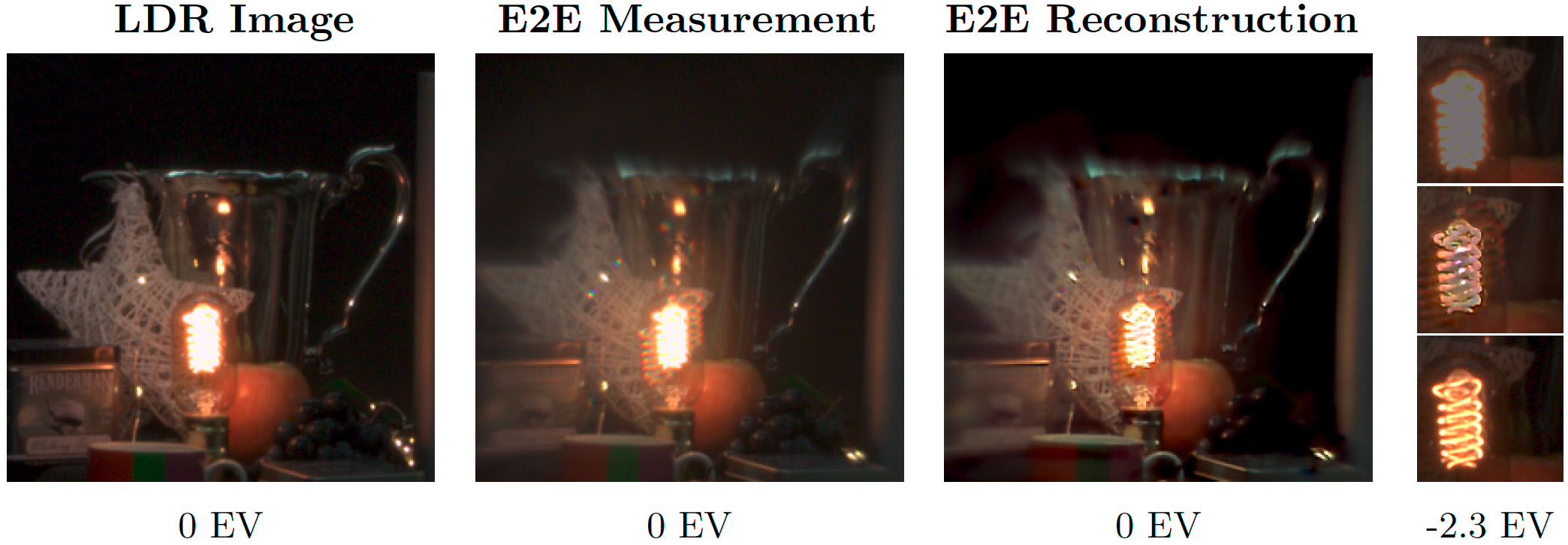ABSTRACT
High-dynamic-range (HDR) imaging is crucial for many computer graphics and vision applications. Yet, acquiring HDR images with a single shot remains a challenging problem. Whereas modern deep learning approaches are successful at hallucinating plausible HDR content from a single low-dynamic-range (LDR) image, saturated scene details often cannot be faithfully recovered. Inspired by recent deep optical imaging approaches, we interpret this problem as jointly training an optical encoder and electronic decoder where the encoder is parameterized by the point spread function (PSF) of the lens, the bottleneck is the sensor with a limited dynamic range, and the decoder is a convolutional neural network (CNN). The lens surface is then jointly optimized with the CNN in a training phase; we fabricate this optimized optical element and attach it as a hardware add-on to a conventional camera during inference. In extensive simulations and with a physical prototype, we demonstrate that this end-to-end deep optical imaging approach to single-shot HDR imaging outperforms both purely CNN-based approaches and other PSF engineering approaches.




